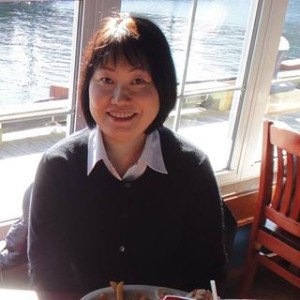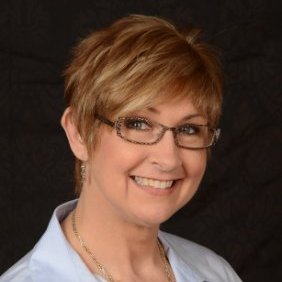Women in the Trenches
 Dr. Shammo earned her medical degree from Aleppo Medical School in Syria, after which she sought further education in the US, and completed residencies in Anatomic, and clinical Pathology, as well as Internal Medicine at McGaw Medical Center of Northwestern University, in Evanston, Illinois. She then completed a 3-year fellowship in the Division of Hematology/Oncology at University of Chicago.Dr. Shammo is associate professor of medicine and Pathology, Section of Hematology and Stem Cell Transplantation, Division of Hematology/Oncology, at Rush University Medical Center in Chicago, Illinois, where she spearheads the MDS/MPN/Bone Marrow Failure Program. As principal investigator of clinical trials in her area of expertise, and as chair of the protocol review and monitoring committee at Rush Cancer Institute; she is heavily involved in education, research and administrative activities in the division of Hematology/Oncology. She is recognized nationally for her expertise in bone marrow failure syndromes/ PNH, and was chosen to serve in the role of a national coordinator for the US PNH registry.
Dr. Shammo earned her medical degree from Aleppo Medical School in Syria, after which she sought further education in the US, and completed residencies in Anatomic, and clinical Pathology, as well as Internal Medicine at McGaw Medical Center of Northwestern University, in Evanston, Illinois. She then completed a 3-year fellowship in the Division of Hematology/Oncology at University of Chicago.Dr. Shammo is associate professor of medicine and Pathology, Section of Hematology and Stem Cell Transplantation, Division of Hematology/Oncology, at Rush University Medical Center in Chicago, Illinois, where she spearheads the MDS/MPN/Bone Marrow Failure Program. As principal investigator of clinical trials in her area of expertise, and as chair of the protocol review and monitoring committee at Rush Cancer Institute; she is heavily involved in education, research and administrative activities in the division of Hematology/Oncology. She is recognized nationally for her expertise in bone marrow failure syndromes/ PNH, and was chosen to serve in the role of a national coordinator for the US PNH registry.
Dr. Holly Geyer
Dr. Geyer currently serves as an Assistant Professor in the Division of  Hospital Medicine at Mayo Clinic in Phoenix, Arizona and has spent the past five years focusing on Quality of Life projects for MPN patients. Raised as a missionary within impoverished regions of South Africa, her earliest years in life were spent serving those who were no strangers to daily suffering. Upon returning to the United States, she married this passion for service with her interest in the sciences and graduated medical school at the University of North Dakota in 2008. She went on to complete her residency at the Mayo Clinic in Arizona where she gained interest in the MPN projects sponsored by the renowned MPN specialist, Dr. Ruben Mesa. Now actively engaged with the MPN Quality of Life International Working Group (MPN-QOL IWG), Dr. Geyer’s research interests focus on identifying how MPN patient symptoms relate to their disease features, mutations, other symptoms and quality of life. She furthermore contributes to projects that reduce the MPN symptom burden, either via pharmacological or non-pharmacological approaches. Among her more noteworthy studies was a recent investigation which identified that unlike in myelofibrosis, polycythemia vera (PV) and essential thrombocythemia (ET) patient symptomatology does not correlate with disease risk scores. This significant information may in time open new treatments to PV and ET patients who remain very symptomatic but of lower risk scores and thus ineligible for novel therapies. She has more recently become involved with speaking to patient advocacy groups and enjoys the opportunity to share new advances in the field. On an interesting note, Dr. Geyer’s sister, Dr. Robyn Scherber, is also actively involved with MPN research and was responsible for producing the landmark MPN Patient Reported Outcome tools, MPN-SAF and MPN-SAF TSS (MPN-10).
Hospital Medicine at Mayo Clinic in Phoenix, Arizona and has spent the past five years focusing on Quality of Life projects for MPN patients. Raised as a missionary within impoverished regions of South Africa, her earliest years in life were spent serving those who were no strangers to daily suffering. Upon returning to the United States, she married this passion for service with her interest in the sciences and graduated medical school at the University of North Dakota in 2008. She went on to complete her residency at the Mayo Clinic in Arizona where she gained interest in the MPN projects sponsored by the renowned MPN specialist, Dr. Ruben Mesa. Now actively engaged with the MPN Quality of Life International Working Group (MPN-QOL IWG), Dr. Geyer’s research interests focus on identifying how MPN patient symptoms relate to their disease features, mutations, other symptoms and quality of life. She furthermore contributes to projects that reduce the MPN symptom burden, either via pharmacological or non-pharmacological approaches. Among her more noteworthy studies was a recent investigation which identified that unlike in myelofibrosis, polycythemia vera (PV) and essential thrombocythemia (ET) patient symptomatology does not correlate with disease risk scores. This significant information may in time open new treatments to PV and ET patients who remain very symptomatic but of lower risk scores and thus ineligible for novel therapies. She has more recently become involved with speaking to patient advocacy groups and enjoys the opportunity to share new advances in the field. On an interesting note, Dr. Geyer’s sister, Dr. Robyn Scherber, is also actively involved with MPN research and was responsible for producing the landmark MPN Patient Reported Outcome tools, MPN-SAF and MPN-SAF TSS (MPN-10).
 Kaori Taki
Kaori Taki
Patient/Japan Support Group Coordinator
While in high school, I experienced frequent nose bleeds during the night and headaches along with a duodenal ulcer. I saw an otorhinolaryngologist (head and neck surgeon) and an internist but they did not refer me to a hematologist. These symptoms began while I was in Canada as an exchange student. After graduating from high school there, I returned home to Japan. At the time, I didn’t think my symptoms were very serious although I remember having serious ear pain when taking off and landing in the airplane.
In 1998, I enrolled in graduate school in Japan and passed the exchange program to study at Washington State University for one year. In that year, I had serious problems in my large intestine with hemorraging, pain and a fever. In 1999, I spent a week in the hospital where I was diagnosed with essential thrombocythemia (ET) for the first time and put on aspirin daily.
After the completion of the exchange program, I returned to Japan and graduated from a Master’s program. In 2001, I went to Canada for post-graduate studies. Since the university medical insurance covered my expenses, I started taking Agrylin and Hydrea in September. However, I experienced a lot of side effects such as headaches, palpitations, pancreatitis, nausea and stomachaches.
After a month of taking both Agrylin and Hydrea, I asked my hematologist to increase the Agrylin and stop the Hydrea. I continued to struggle with side effects, which made it very difficult to continue my studies. I was experiencing nose bleeds during the night and not sleeping. In 2003, I had to be hospitalized for a month because I wasn’t eating or sleeping. I had to explore ways to get Agrylin, despite the side effects. I returned to Japan and had to try various kinds of medications available in Japan although it took two years to find ways to control them.
In February 2005, I started my patient support group. I began with an online group I had been communicating with since 2001. Japan was far behind in MPN research making it necessary for me to appeal to the authorities and pharmaceutical companies for available treatments. Before starting the patient support group, I was translating MPN abstracts and newsletters. I received MPN-related information from the US and created a website and mailing list. I began appealing for early approval of drugs that were available in the US and EU markets that were not available in Japan.
With the cooperation of Professor Norio Komatsu, PhD, Juntendo University, a leading MPN specialist in Japan, I create two patient educational booklets (click here to view the booklet). We continue to meet a few times a year and host an annual MPN seminar.
Click here for Kaori’s support group information
One Size Does Not Fit All: Women & MPN
By Marina Sampanes Peed
Any parent of boys and girls will confirm that there are differences between the genders that are not based on social conditioning. Yet much of the research for decades had mostly male subjects; what was learned was applied to women. That’s why I was so excited to learn about the newer MPN research that teases out the particulars of female and male patients. Many of the virtual conversations in the various MPN on-line support groups speak in generalities (e.g., “does anyone else have…?”). As more data becomes available, newly-diagnosed patients and care givers may more quickly understand that this is not a “one size fits all” disease process.
Gender Difference in MPN: Dr. Holly Geyer is from Mayo Clinic Arizona and leads the International Working Group of MPN Quality of Life Working Group. Her report on Gender Differences in MPN was particularly interesting. Click here to view her conference presentation. First, Dr. Geyer shared some MPN basics:
- Essential Thrombocythemia (ET): Diagnosis at age 60. 66% patients are female. More likely to be CAL-R positive or triple negative (no JAK2, CAL-R, or MPL). Life expectancy: normal
- Polycythemia Vera (PV): Diagnosis at age 60. 50% patients are female and 50% male. Higher JAK2 allele burden. More venous blood clots in liver; more likely to have splenomegaly; more likely to have occult (hidden) disease. Life expectancy: normal.
- Primary Myelofibrosis (MF): Diagnosis usually in late 60’s. Patient mix is 50/50 female/male. Can be primary or show up after ET or PV. Fatigue, anemia, cytothemias are common. Life expectancy: 6-10 years, but this may be changing with the new JAK2 inhibitors coming on the scene.

